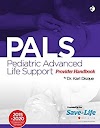Critical Decisions in Emergency and Acute Care Electrocardiography
This is a unique format among textbooks with an ECG focus. The clinical scenarios cover the issues involved in detecting and managing major cardiovascular conditions. Focused, structured discussion then solves these problems in a clinically relevant, rapid, and easy to read fashion.
This novel approach to ECG instruction is ideal for practicing critical care and emergency physicians, specialist nurses, cardiologists, as well as students and trainees with a special interest in the ECG.Content:
Chapter 1 What are the Clinical Applications of the ECG in Emergency and Critical Care? (pages 1–11): Rajan A. G. Patel and Christopher M. Rembold
Chapter 2 What are the Indications for the ECG in the Pediatric Emergency Department? (pages 12–18): Michael A. McCulloch and D. Scott Lim
Chapter 3 What are the Limitations of the ECG in Clinical Practice? (pages 19–23): J. Jason West and Allan G. Simpson
Chapter 4 Is the ECG Indicated in Stable, Non?Cardiac Patients Admitted to the Hospital? (pages 24–27): Andrew Darby and Michael Ragosta
Chapter 5 What is the Use of the ECG in Preoperative Assessment and Cardiovascular Risk Stratification? (pages 28–32): Peter M. Pollak and Ellen C. Keeley
Chapter 6 Which Patients Benefit from Continuous Electrocardiographic Monitoring during Hospitalization? (pages 33–38): Adam Helms and John Ferguson
Chapter 7 How should the ECG be Used in the Syncope Patient? (pages 39–48): Christopher T. Bowe
Chapter 8 How should the ECG be Used in the Chest Pain Patient? (pages 49–57): Jason T. Schaffer
Chapter 9 How should the ECG be Used in the Dyspneic Patient? (pages 58–63): Carl A. Germann
Chapter 10 How should the ECG be Used in the Patient with Altered Mentation? (pages 64–68): Tamas R. Peredy
Chapter 11 How should the ECG be Used in the Patient During and Following Cardiac Arrest? (pages 69–74): John R. Saucier
Chapter 12 What is the Impact/Proper Role of the Ecg in the Undifferentiated Cardiorespiratory Failure Patient? (pages 75–81): Michael Osmundson
Chapter 13 What is the Role of the ECG in ACS? (pages 83–91): Samuel J. Stellpflug, Joel S. Holger and Stephen W. Smith
Chapter 14 What Pseudoinfarction Patterns Mimic ST Elevation Myocardial Infarction? (pages 92–102): Stephen W. Smith and David M. Larson
Chapter 15 What ECG Changes might Myocardial Ischemia Cause other than ST Segment Elevation or Q Waves and What are the Differential Diagnoses of these Changes? (pages 103–114): Stefan C. Bertog and Stephen W. Smith
Chapter 16 What is a Hyperacute T Wave? (pages 115–121): Mark D. Connelly, Joel S. Holger and Stephen W. Smith
Chapter 17 What is the Significance of Q Waves? (pages 122–127): Wayne Whitwam and Vipin Khetarpal
Chapter 18 What are the ECG Indications for Additional Electrocardiographic Leads (Including Electrocardiographic Body?Surface Mapping) in Chest Pain Patients? (pages 128–137): Daniel T. O'Laughlin, Khaled Bachour and Wayne Whitwam
Chapter 19 What further Diagnostic Adjuncts to the Standard 12?Lead ECG may Help to Diagnose ACS? (pages 138–147): Mark D. Connelly, Joel S. Holger, Stefan C. Bertog and Stephen W. Smith
Chapter 20 Is Serial Electrocardiography (Serial ECGs and ST Segment Monitoring) of Value in the ECG Diagnosis of ACS? (pages 148–154): Daniel T. O'Laughlin
Chapter 21 What QRS Complex Abnormalities Result in ST Segment Elevation that may Mimic or Obscure AMI? (pages 155–166): Stephen W. Smith and David M. Larson
Chapter 22 What are the Electrocardiographically Silent Areas of the Heart? (pages 167–175): Samuel J. Stellpflug, Joel S. Holger and Stephen W. Smith
Chapter 23 What is the Value of the Prehospital Acquired 12?Lead ECG? (pages 176–181): Michael Christopher Kurz
Chapter 24 What are the Electrocardiographic Indications for Reperfusion Therapy? (pages 182–194): William Brady, David Burt, Chris Ghaemmaghami, Robert O'Connor and Stephen W. Smith
Chapter 25 What are the ECG Manifestations of Reperfusion and Reocclusion? (pages 195–203): Daniel T. O'Laughlin
Chapter 26 Does Localization of the Anatomic Segment/Identification of the Infarct?Related Artery Affect Early Care? (pages 204–215): Wayne Whitwam and Stephen W. Smith
Chapter 27 Can the ECG be Used to Predict Cardiovascular Risk and Acute Complications in ACS? (pages 216–229): Wayne Whitwam, Nima Taha and Khaled Bachour
Chapter 28 Can the Electrocardiogram Determine the Rhythm Diagnosis in Narrow Complex Tachycardia? (pages 231–243): Lisa M. Filippone and Claire C. Caldwell
Chapter 29 Can the ECG Guide Treatment of Narrow QRS Tachycardia? (pages 244–250): Michael A. Bohrn
Chapter 30 How can the ECG Guide the Diagnosis and Management of Wide Complex Tachycardias? (pages 251–266): Traci Thoureen and Amal Mattu
Chapter 31 Can the ECG Guide Management in the Patient with Bradydysrhythmias? (pages 267–275): Joseph Shiber
Chapter 32 What are the Electrocardiographic Indications for Temporary Cardiac Pacing? (pages 276–283): Michael Abraham and Michael C. Bond
Chapter 33 Can the ECG Accurately Diagnose Pacemaker Malfunction and/or Complication? (pages 284–294): Kevin C. Reed
Chapter 34 How can the ECG Guide Acute Therapy in the Wolff Parkinson White (WPW) Patient? (pages 295–302): Michael C. Bond
Chapter 35 What is the Role of the ECG in PEA Cardiac Arrest Scenarios? (pages 303–314): Colin G. Kaide
Chapter 36 What is the Role of the ECG in the Critically Ill, Non?Coronary Patient? (pages 315–325): Clay A. Cauthen and Ajeet Vinayak
Chapter 37 Can the ECG Distinguish between Coronary and Non?Coronary Etiologies in the Critically Ill Patient? (pages 326–334): Michael J. Lipinski and D. Kyle Hogarth
Chapter 38 What is the Role of the ECG in Therapeutic Considerations/Medical Management Decisions in the Critically Ill Patient? (pages 335–344): Billie Barker, Adam Helms and Ajeet Vinayak
Chapter 39 Can the ECG Predict Risk in the Critically Ill, Non?Coronary Patient? (pages 345–353): Clay A. Cauthen and Ajeet Vinayak
Chapter 40 What is the Proper Role of the ECG in the Evaluation of Patients with Suspected PE? (pages 354–361): Peter M. Pollak and Joseph E. Levitt
Chapter 41 What is the Role and Impact of the ECG in the Patient with Hyperkalemia? (pages 362–370): Steve Herndon, Benjamin Holland and Ajeet Vinayak
Chapter 42 What is the Role and Impact of the ECG in the Patient with Electrolyte Abnormalities other than Hyperkalemia? (pages 371–377): Benjamin Holland and Franklin McGuire
Chapter 43 What is the Role of the ECG in the Hypothermic Patient? (pages 378–383): Raed Wahab, Clay A. Cauthen and Daniel Grinnan
Chapter 44 What are the Non?ACS “Deadly” ECG Presentations? (pages 384–394): Adam Helms, Clay A. Cauthen and Ajeet Vinayak
Chapter 45 How Useful is the ECG in the Evaluation of the Poisoned Patient? (pages 395–401): Nathan P. Charlton
Chapter 46 Can the ECG Guide Management in the Critically Ill, Poisoned Patient? (pages 402–406): Nathan P. Charlton
Chapter 47 Do Characteristics of the QRS Complex in the Poisoned Patient Correlate with Outcome? (pages 407–411): Stephen D. Lee, Nathan P. Charlton and Christopher P. Holstege
Chapter 48 What is the Treatment for Wide Complex Dysrhythmias in the Poisoned Patient? (pages 412–416): David T. Lawrence
Chapter 49 What is the ECG Differential Diagnosis of ST Segment Elevation? (pages 417–427): Richard A. Harrigan and Theodore C. Chan
Chapter 50 What is the ECG Differential Diagnosis of ST Segment Depression? (pages 428–435): Richard A. Harrigan and Theodore C. Chan
Chapter 51 What is the ECG Differential Diagnosis of the Abnormal T Wave? (pages 436–443): Theodore C. Chan and Richard A. Harrigan
Chapter 52 What is the ECG Differential Diagnosis of Narrow Complex Tachycardia? (pages 444–451): Theodore C. Chan and Richard A. Harrigan
Chapter 53 What is the ECG Differential Diagnosis of Wide Complex Tachycardia? (pages 452–460): Theodore C. Chan and Richard A. Harrigan
Chapter 54 What is the ECG Differential Diagnosis of Bradycardia? (pages 461–468): Richard A. Harrigan and Theodore C. Chan
Chapter 55 What is the ECG Differential Diagnosis of the Abnormally Wide or Large QRS Complex? (pages 469–478): Theodore C. Chan and Richard A. Harrigan
Chapter 56 What is the ECG Differential Diagnosis of a Prolonged Qt Interval? (pages 479–482): Richard A. Harrigan and Theodore C. Chan














